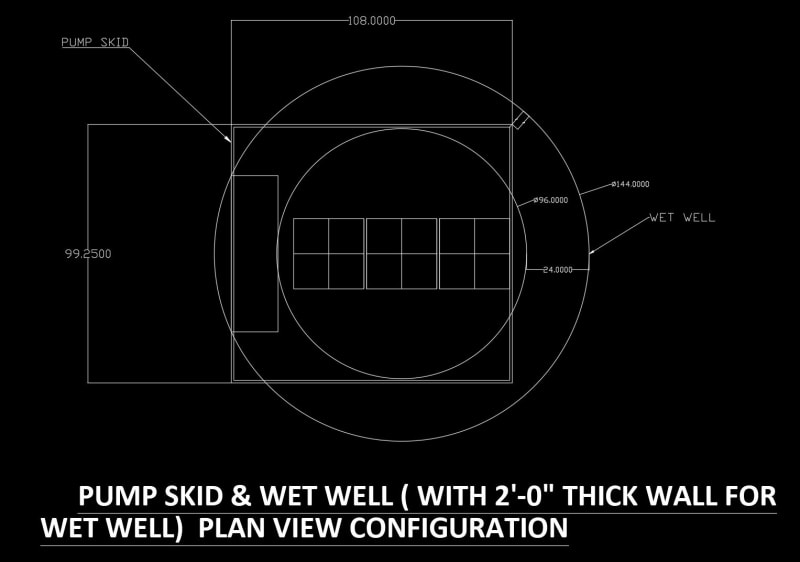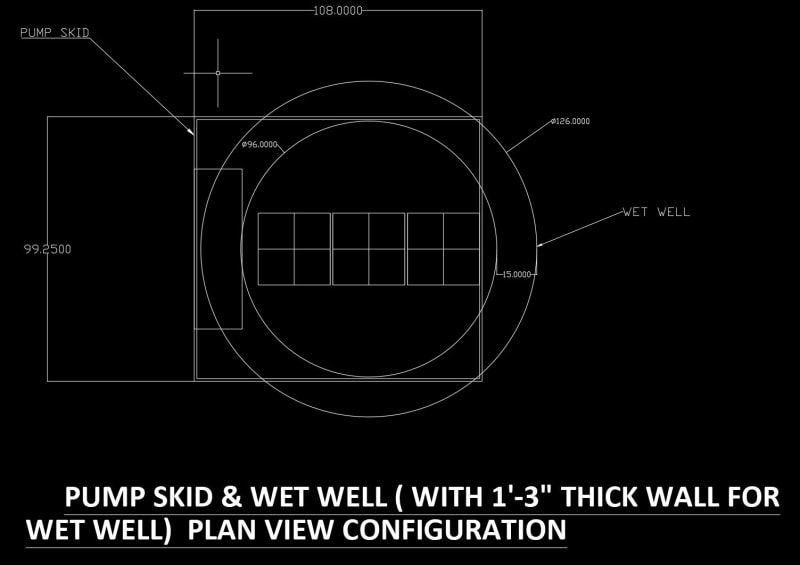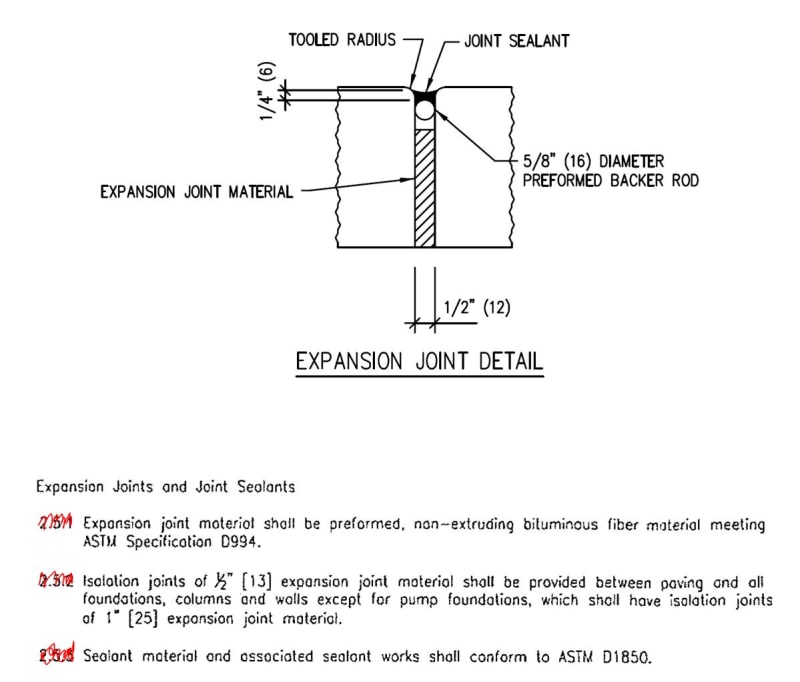I am working on a Wet Well Design that will have pumps sitting on top of it. The Wet Well will NOT have a concrete top covering it. Instead, a pump skid will rest on top of the Wet well to cover the hole. The interior diameter of the wet well is 8'-0".
I have attached a link with 2 types of options for constructing the Wet Well:
For option 1: A 1'-0" thick pavement is doweled into the Wet Well. Then the pump skid is placed on top of the wet well to cover the 8'-0" dia hole. Then the anchor bolts for the pump skid would be installed into the pavement.
For option 2: A 1'-0" thick pavement is adjacent to the Wet Well, but separated by expansion joints. The pump skid anchor bolts will be installed into the walls of the wet well. The Wet Well would be independent of the 1'-0" thick pavement, based on the expansion joint.
The PIP CVC01015 Civil Design Criteria, regarding pavement and foundations, states " Expansion joints are not required except at foundations and for other items penetrating through the paving. Note that a pair of #3 bars (10 mm bars) shall be embedded mid-slab at 6 and 12 inches (150 mm and 300 mm) in from a re-entrant corner."
I would imagine this is applicable for this situation.
Would it be better to have the Wet Well act separate from the pavement (option 2) or have the pavement & wet well act as one (option 1)?
Does doweling the pavement to the wet well add any structural strength/capacity to the wet well? Would it be a better way to anchor the pump skid?
Is it a better design to keep them independent via expansion joint?
Are there any technical documents that address this kind of situation?
Comments/suggestions are appreciated.
I have attached a link with 2 types of options for constructing the Wet Well:
For option 1: A 1'-0" thick pavement is doweled into the Wet Well. Then the pump skid is placed on top of the wet well to cover the 8'-0" dia hole. Then the anchor bolts for the pump skid would be installed into the pavement.
For option 2: A 1'-0" thick pavement is adjacent to the Wet Well, but separated by expansion joints. The pump skid anchor bolts will be installed into the walls of the wet well. The Wet Well would be independent of the 1'-0" thick pavement, based on the expansion joint.
The PIP CVC01015 Civil Design Criteria, regarding pavement and foundations, states " Expansion joints are not required except at foundations and for other items penetrating through the paving. Note that a pair of #3 bars (10 mm bars) shall be embedded mid-slab at 6 and 12 inches (150 mm and 300 mm) in from a re-entrant corner."
I would imagine this is applicable for this situation.
Would it be better to have the Wet Well act separate from the pavement (option 2) or have the pavement & wet well act as one (option 1)?
Does doweling the pavement to the wet well add any structural strength/capacity to the wet well? Would it be a better way to anchor the pump skid?
Is it a better design to keep them independent via expansion joint?
Are there any technical documents that address this kind of situation?
Comments/suggestions are appreciated.



